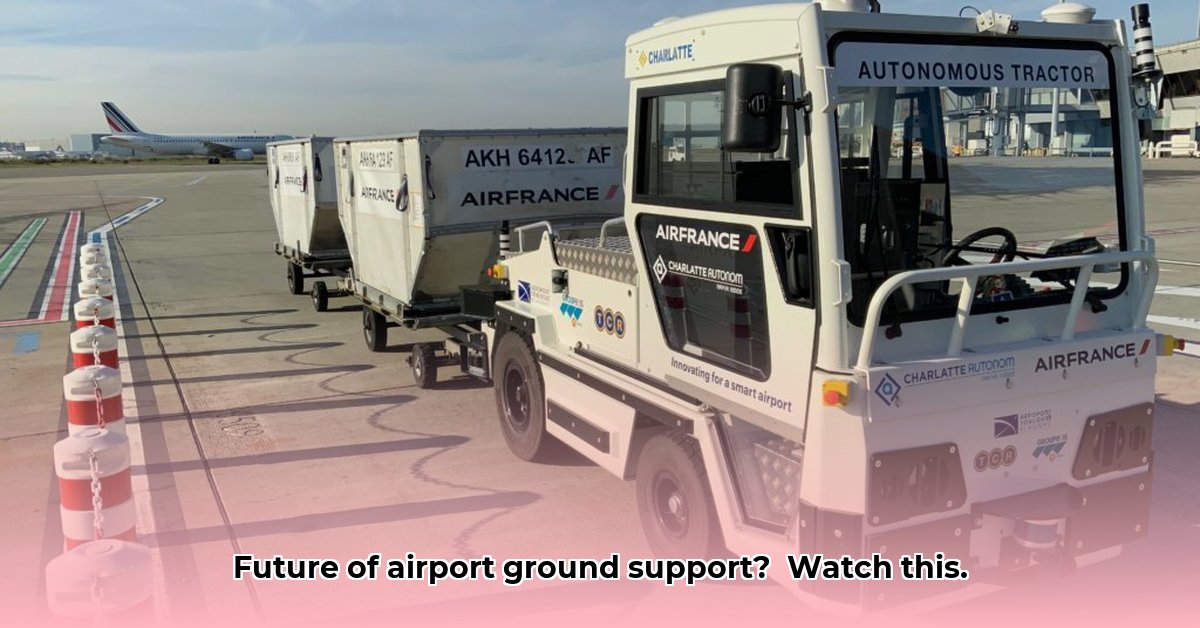
The Rise of Electric and Autonomous Airport Tractors
Airport tractors, essential for efficient ground operations, are undergoing a significant technological shift. For decades, diesel-powered models have been the industry standard. However, a growing trend toward electric and autonomous solutions is reshaping the landscape, promising environmental benefits and increased operational efficiency. This article analyzes this market transformation, detailing technological advancements, challenges, and actionable insights for stakeholders. Learn more about autonomous tractor technology at this case study.
Market Overview: A Diversified Ecosystem
The airport tractor market comprises a diverse range of manufacturers, offering vehicles with varying fuel types (diesel, electric, hybrid), towing capacities, and sizes. Established companies continue to dominate the traditional diesel segment, while innovative startups are leading the charge in the electric and autonomous sectors. While precise market sizing data is limited, the market is significant and growing, fueled by the increasing demand for sustainable and efficient airport operations.
Technological Trends: Electrification and Automation
The Electric Transformation
Electric airport tractors offer substantial environmental advantages. They produce zero tailpipe emissions, significantly reducing noise and air pollution at airports. This contributes to a quieter and healthier environment for passengers, staff, and surrounding communities. Furthermore, many operators project long-term cost savings due to lower electricity prices compared to diesel fuel.
However, the transition to electric power presents challenges. High initial capital costs due to expensive battery technology represent a significant barrier. The limited operating range of current batteries poses operational limitations, especially at large airports. The need for considerable investment in charging infrastructure adds further complexity. While long-term cost savings are anticipated, their realization depends heavily on battery technology advancements and the relative cost of electricity and diesel fuel. "The initial investment in electric tractors is substantial," notes Dr. Anya Sharma, Lead Engineer at GreenTech Aviation, "but the long-term operating cost savings are projected to be significant, particularly given the environmental benefits."
Autonomous Operation: A Future Reality?
The integration of autonomous driving technology into airport tractors offers substantial potential for increased safety and efficiency. Automated systems can reduce human error, a factor in many accidents. Autonomous operation could also optimize routes and schedules, improving resource allocation and minimizing operational downtime. However, the development of reliable sensor technology and robust software systems remains a critical challenge. Safety concerns surrounding unexpected obstacles and potential system malfunctions need thorough addressing. Addressing regulatory uncertainties is also vital before widespread adoption can occur.
Actionable Insights for Stakeholders
The transition to electric and autonomous airport tractors requires a multifaceted approach involving all stakeholders. A strategic roadmap is essential for successful implementation.
Airport Operators: Implement pilot programs with electric tractors. Invest in employee training on new technologies. Develop comprehensive electrification strategies for the entire ground support fleet. Explore autonomous solutions strategically.
Tractor Manufacturers: Prioritize the development of electric tractors with extended range and cost-effective batteries. Invest heavily in autonomous system R&D. Collaborate on establishing industry standards for safety and performance. Advocate for harmonized charging infrastructure.
Regulatory Agencies: Update safety and emissions regulations to accommodate electric and autonomous tractors. Develop clear guidelines for autonomous operation, emphasizing international harmonization of standards.
Airlines: Assess the operational advantages of electric tractors within ground handling procedures. Integrate data analytics to optimize ground operations and potentially reduce costs.
Risk Assessment: Electric Airport Tractors
The adoption of electric tractors presents some inherent risks. It's critical to understand and mitigate these:
| Risk Factor | Likelihood | Impact | Mitigation Strategies |
|---|---|---|---|
| Battery Degradation | Medium | High | Invest in advanced battery technology, implement proactive maintenance programs. |
| Charging Infrastructure | Medium | Medium | Plan sufficient charging stations; explore innovative fast-charging technologies. |
| Range Limitations | Low | Medium | Optimize routes, deploy tractors strategically, leverage advancements in battery technology. |
| Higher Maintenance Costs | Low | Medium | Develop optimized maintenance programs; explore predictive maintenance strategies. |
| Regulatory Uncertainty | Low | High | Actively monitor regulatory changes; engage with regulatory agencies. |
Regulatory Landscape: The Need for Global Harmonization
International cooperation is crucial for facilitating the widespread adoption of electric and autonomous airport tractors. Harmonizing safety and emissions standards, alongside establishing clear rules for autonomous operations, is essential. A unified approach reduces compliance costs and accelerates the transition to sustainable ground support equipment.
Conclusion: A Sustainable Future for Airport Operations
The shift towards electric and autonomous airport tractors is a significant development in airport technology. While challenges remain, the benefits – enhanced sustainability, improved efficiency, and increased safety – are undeniable. Through collaborative efforts and technological innovation, the future of airport ground support will be cleaner, quieter, and more efficient. The transition will require careful planning, appropriate risk management, and ongoing collaboration among all stakeholders. The rewards, however, will be substantial.